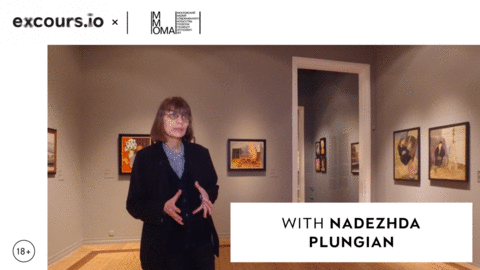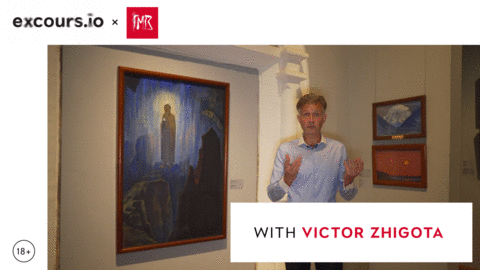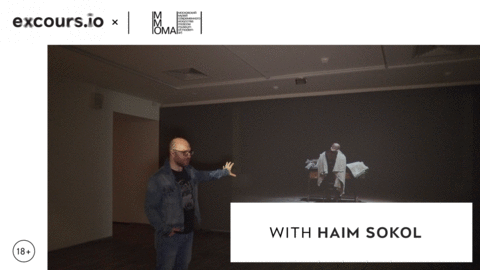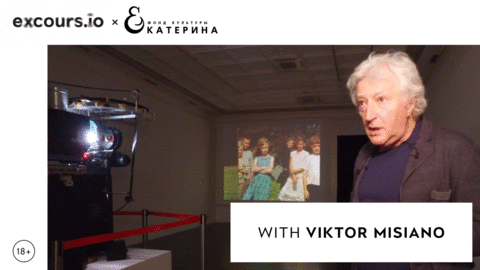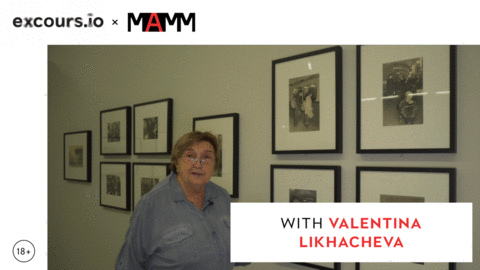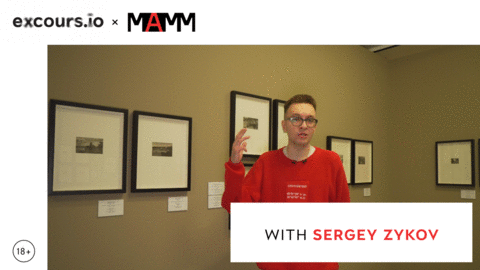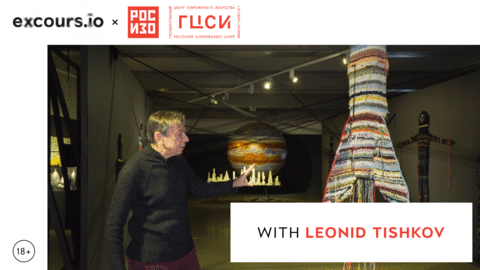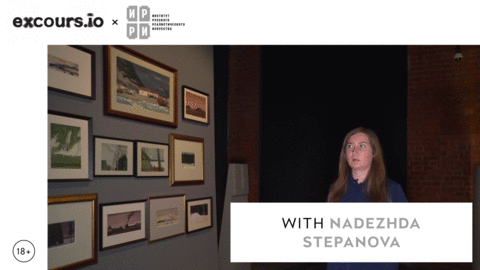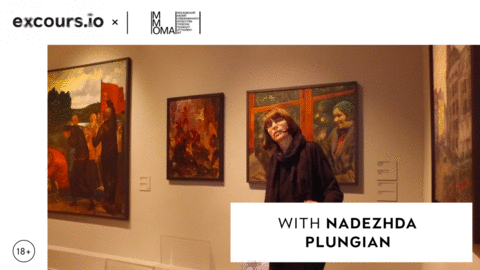Implicit Modernism. Roman Babichev’s Collection. Part II.
The exhibition presents Roman Babichev’s collection as a compelling exploration of Soviet modernism, challenged by decades of controversy surrounding the term due to the anti-formalist campaigns of the 1930s and Cold War ideological battles. Offering a fresh lens, the exhibition sheds light on the often-overlooked variety within Soviet art, breaking down entrenched stereotypes and revealing the interconnections among post-avant-garde communities active after the 1932 ban on creative associations. By emphasizing the nuanced expressions of these artists—whose declarations were rendered in their unique painting styles rather than explicit statements—the exhibition invites viewers to reassess the rich tapestry of Soviet artistic heritage through a symbolist perspective, encouraging a more multidimensional understanding of its evolving narrative.
Why should you watch this?
The exhibition challenges prevailing narratives about art and encourages critical engagement with the complexities of cultural identity. In a time when discussions about artistic censorship, identity politics, and the role of art in society are more pertinent than ever, this exhibition provides a vital platform to explore how historical legacies shape contemporary artistic expressions. By delving into the often-misunderstood facets of Soviet modernism, viewers will uncover important parallels with current global movements calling for the recognition of marginalized voices and the reevaluation of entrenched ideologies. The guided experience not only enriches understanding of the artwork but also fosters a dialogue about the role of art as a form of resistance and expression in addressing modern societal challenges.
Nicholas Roerich. Sanctuaries and Citadels
N.K. Roerich’s exhibition unveils over 80 captivating works inspired by his 1925 Central Asian expedition. With an extraordinary blend of majestic mountain landscapes, Buddhist monasteries, and formidable fortresses, Roerich crafts a compelling narrative of heroism and spiritual pursuit that transcends cultural boundaries. His pieces celebrate the sacredness of labor and the enduring human spirit, evoking a universal call to courage and resilience. Roerich’s unique style, characterized by what can be termed “epic realism,” draws upon his deep understanding of history, folklore, and religious traditions.
Why should you watch this?
N.K. Roerich’s “Shrines and Strongholds” resonates powerfully in today’s world, where themes of resilience, spirituality, and cultural identity are increasingly vital. As modern society redefines spirituality Roerich’s exploration of heroism and the sacred nature of labor offers a poignant reflection on the indomitable human spirit that transcends boundaries of faith and nationality. His majestic depictions of mountain landscapes and spiritual sites serve as symbols of hope, encouraging us to aspire for personal and collective growth. Roerich’s emphasis on courage and the potential for spiritual feats invites contemporary audiences to recognize the shared human experience and the transformative power of art as a catalyst for understanding. The exhibition not only honors Roerich’s legacy but also inspires a renewed dialogue about courage, identity, and our interconnectedness in the global narrative.
Haim Sokol. Testimony
Haim Sokol’s solo exhibition delves into the intricate interplay of memory and oblivion, offering a poignant exploration of individual narratives amidst historical upheaval. Blending documentary material with artistic expression, Sokol showcases a decade’s worth of work that includes videos in collaboration with migrant workers, a workshop dedicated to the art of protest, and a thought-provoking examination of “paper memory.” The exhibition features a rich tapestry of forms — drawings, performances, installations, and objects crafted from diverse materials such as metal, leather, and plastic — all converging around the central video installation “Testimony,” which poignantly recounts his father’s harrowing experiences in a ghetto during WWII. This compelling collection not only honors those marginalized in history but also ignites crucial conversations about identity, resilience, and the significance of personal testimonies in contemporary art.
Why should you watch this?
The guided tour provides a vital lens through which we can confront and reflect on pressing contemporary issues such as migration, displacement, and the struggle for recognition. In an era marked by increasing xenophobia and political polarization, Sokol’s exploration of marginalized voices and historical amnesia resonates deeply, urging us to confront our collective past and present. The guided tour offers insights that enrich our understanding of how memory shapes identity and informs socio-political discourse, making it particularly relevant as today’s world grapples with the consequences of both historical injustices and ongoing humanitarian crises. Engaging with Sokol’s work through a guided narrative not only enhances appreciation for the artistry involved but also emphasizes the urgency of empathy and awareness in combating societal erasure and advocating for the dignity of all individuals.
Human Condition. Session III. “Time And Senses”: Trauma, Memory, Oblivion, Knowledge. Exhibition “The Haunted House”
The Human Condition exhibition, a thought-provoking exploration of contemporary art that delves into the complexities of human experience. This showcase features a diverse collection of works that challenge perceptions and provoke dialogue about identity, society, and the emotional landscape of modern life. Each piece serves as a mirror, reflecting the multifaceted nature of existence in today’s world. Through innovative mediums and striking visuals, the artists invite viewers to engage deeply with themes of vulnerability, connection, and resilience. This exhibition is not just a display of art; it’s an immersive journey that encourages introspection and a deeper understanding of what it means to be human in an ever-evolving society.
Why should you watch this?
А thought-provoking contemporary art exhibition that delves into the intricacies of identity and societal dynamics in our rapidly changing world. This collection brings together diverse artists whose works challenge perceptions and provoke dialogue about what it means to be human today. Through innovative mediums and poignant narratives, the exhibition invites viewers to reflect on personal and collective experiences, making it an essential exploration for anyone interested in the intersections of art, culture, and self. Don’t miss the opportunity to engage with pieces that resonate deeply with our shared humanity, encouraging both introspection and conversation. Experience art that speaks to the heart of contemporary life — your perspective might just change.
Mikhail Grachev. Soviet Daily Life. 1930s—1960s
In Mikhail Grachev. Soviet Daily Life. 1930s—1960s through an array of photographs, artifacts, and multimedia installations, attendees are invited to experience the complexities of everyday existence during a transformative era in Russian history. The exhibition captures the interplay of culture, politics, and personal narratives, reflecting how art and design were interwoven into the fabric of daily routines — from the bustling streets to communal celebrations. By showcasing both the mundane and the extraordinary, the exhibition offers a unique lens on how people lived, worked, and dreamt in a time of significant socio-political change, encouraging visitors to ponder the lasting impact of this period on contemporary society and culture.
Why should you watch this?
Within this exhibition you can immerse yourself in a pivotal chapter of history at this thought-provoking exhibition that brings to life Soviet daily life from the 1930s to the 1960s. Explore a rich collection that reveals the nuances of everyday existence during an era marked by both creative expression and political upheaval. From candid photographs to everyday objects, the showcase highlights the resilience and spirit of individuals navigating a complex social landscape. Beyond mere nostalgia, this exhibition invites you to reflect on how art shaped identity and community, providing timeless lessons on the interplay between personal life and broader societal movements.
Vasily Ulitin. Elegy
Vasily Ulitin. Elegy is a poignant exploration of memory and the human experience, showcasing contemporary artworks that delve into themes of loss and nostalgia. This compelling exhibition brings together a diverse array of artists, each offering a unique lens on the fragility of existence and the echoes of the past. Through striking visuals and thought-provoking installations, visitors are invited to reflect on the transient nature of life and the artifacts of memory that linger in our minds. The careful curation weaves a narrative that transcends individual perspectives, creating a shared space for solace and contemplation.
Why should you watch this?
This exhibition is an emotional journey that invites you to confront the depth of human experience through the lens of contemporary creativity. By showcasing artists who grapple with themes of memory, loss, and the passage of time, this exhibition resonates with anyone reflecting on their own stories. Each piece acts as a portal into personal and collective memories, encouraging introspection and dialogue. The thought-provoking installations challenge you to consider how we hold onto the past and the beauty and pain that intertwine in our lives. Whether you’re an art aficionado or simply curious, this guided tour offers a unique opportunity to engage with profound artistic expressions that linger in the heart and mind long after you leave.
Augury of Cosmos
The exhibition Augury of Cosmos showcases the innovative works of contemporary artists, who masterfully blend traditional techniques with modern themes to explore the complexities of human experience. Through a diverse array of mediums, including painting and installation, viewers engage with the interplay of memory, identity, and the passage of time. Thought-provoking pieces challenge conventional narratives, encouraging a dialogue between the past and present. This exhibition not only highlights unique artistic vision but also serves as a reflection on the broader cultural landscape, making it a must-see for anyone interested in the evolution of contemporary art.
Why should you watch this?
Step into the transformative world of contemporary art at the exhibition Augury of Cosmos, showcasing the extraordinary work of artist Mikhail Slogunov. This immersive event delves into the intricate relationship between identity, memory, and the myriad forces that shape our perceptions of self and otherness. Slogunov’s evocative pieces challenge viewers to confront societal norms and personal biases, making it not just an exhibition, but a profound exploration of the human experience. With a diverse array of multimedia installations, the show encourages dialogue and introspection, inviting you to engage deeply with art that resonates on both emotional and intellectual levels.
Nissky. Horizon
Nissky. Horizon is a compelling exhibition at the Institute of Russian Realistic Art that explores the intricate relationship between contemporary art and traditional Russian realism. Featuring a diverse array of artists, the exhibition invites viewers to engage with works that reflect on cultural heritage while pushing artistic boundaries. Each piece serves as a dialogue between past and present, showcasing how contemporary creators reinterpret classical themes and techniques. This fusion not only honors the legacy of Russian art but also challenges perceptions, encouraging a deeper understanding of identity and artistic expression in today’s globalized context. Through thought-provoking installations and evocative imagery, Nissky. Horizon celebrates the enduring relevance of realism in contemporary discourse.
Why should you watch this?
This exhibition invites you to explore the intricate interplay between tradition and innovation in contemporary art. This showcase features a diverse array of works that challenge conventional narratives, offering fresh perspectives on cultural identity and artistic expression. By engaging with both established and emerging artists, the exhibition creates a dialogue that resonates with today’s societal themes. Don’t miss this opportunity to witness how contemporary art reflects and reframes our understanding of the world — each piece serves as a unique lens through which to view the complexities of modern life. Immerse yourself in this vibrant exploration and discover the transformative power of art.

